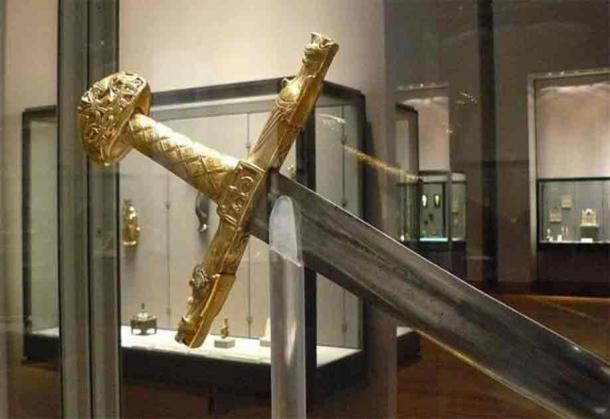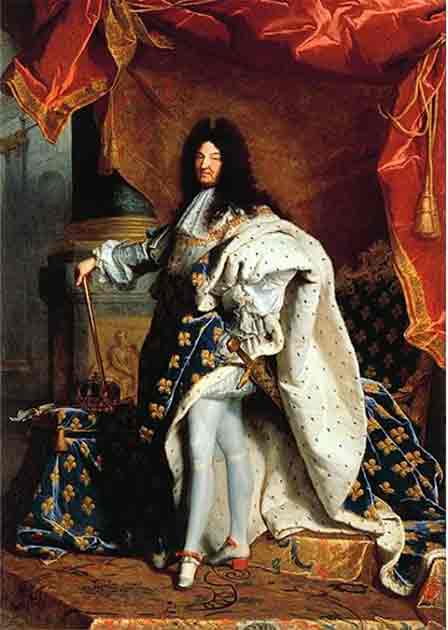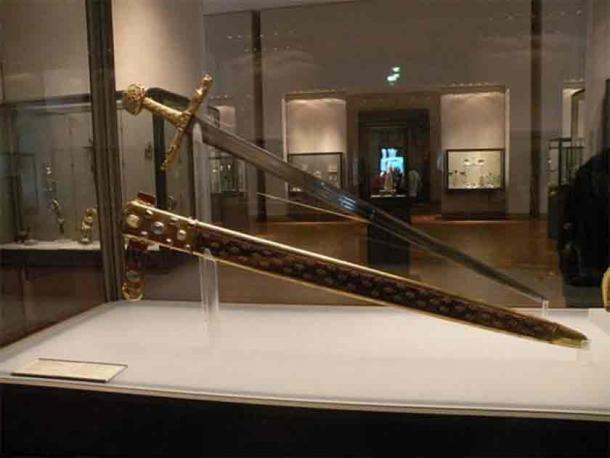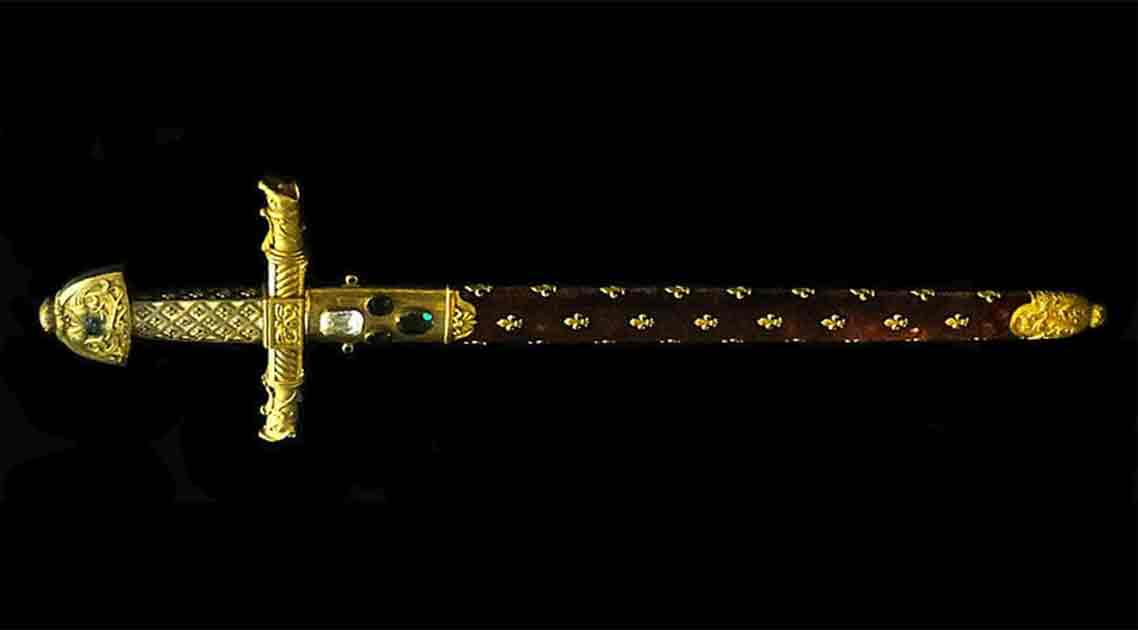Joyeuse: The Legendary Sword of Charlemagne
The sword of Joyeuse, which today sits in the Louvre Museum, is one of the most famous swords in history. Historical records link the sword to Charlemagne the Great, King of the Franks. If it did indeed belong to the famous king, who reigned some 1,200 years ago, the sword of Joyeuse would have been used in countless coronation ceremonies and is tied with ancient myth and legend ascribing it with magical powers.
- Charlemagne: How He Changed History Forever (Video)
- Was the Wallace Sword Truly Wielded by the Famous Scottish ‘Braveheart’?
Charlemagne's Acquisition: The Joyeuse Sword Enters History
The story begins in the year 802 AD. Legend states that the sword of Joyeuse, meaning “joyful” in French, was forged by the famous blacksmith Galas, and took three years to complete. The sword was described as having magical powers associated with it. It was said to have been so bright that it could outshine the sun and blind its wielder's enemies in battle, and any person who wielded the legendary sword could not be poisoned. The emperor Charlemagne, coming back from Spain was said to have set up camp in the region and acquired the sword.

The finely crafted Joyeuse sword (Louvre Museum/CC BY-SA 3.0)
Charlemagne (742-814 AD), who was also known as Charles the Great, was king of the Franks and Christian emperor of the West. He did much to define the shape and character of medieval Europe and presided over the Carolingian Renaissance. After the fall of the Roman Empire, he was the first to reunite Western Europe. He ruled a vast kingdom that encompassed what is now France, Germany, Italy, Austria, and the Low Countries, consolidating Christianity through his vast empire through forced conversions. His military ‘accomplishments’ frequently involved extreme brutality, such as the beheading of more than 2,500 Frankish and Saxon village chiefs.

The coronation of Charlemagne by Raphael, c 1515, (Public Domain)
The 11th century Song of Roland, an epic poem based on the Battle of Roncevaux in 778, describes Charlemagne riding into battle with Joyeuse by his side:
“[Charlemagne] was wearing his fine white coat of mail and his helmet with gold-studded stones; by his side hung Joyeuse, and never was there a sword to match it; its color changed thirty times a day.”
One day, during battle, Charlemagne allegedly lost Joyeuse, and promised a reward for anyone who could find it. After several attempts, one of his soldiers brought it to him and Charlemagne kept his promise by saying,
“Here will be built an estate of which you will be the lord and master, and your descendants will take the name of my wonderful sword: Joyeuse.”
Charlemagne is said to have planted his sword in the ground to mark the point where the town would be built. According to the story, this is the origin of the French town of Joyeuse in Ardèche, which was founded on that spot and named in honor of the sword.

The town of Joyeuse in Ardèche, France (Alainauzas/CC BY-SA 3.0)
There are no historical records to say what happened to the sword Joyeuse after the death of Charlemagne. However, in 1270 AD, a sword identified as Joyeuse was used at the coronation ceremony of French King Philip the Bold, which was held in Reims Cathedral, France, and many kings after that. The sword was kept in the nearby monastery in Saint-Denis, a burial place for French kings, where it remained under the protection of the monks until at least 1505.
Joyeuse was moved to the Louvre on December 5, 1793, following the French Revolution. It was last used by a French king in 1824 with the crowning of Charles X and is the only known sword to have served as the coronation sword of the Kings of France.

King Louis XIV with Joyeuse by Hyacinthe Rigaud, 1701. (Public Domain)
Today, the Joyeuse is preserved as a composite of various parts added over the centuries of use as a coronation sword. The blade is characteristic of the Oakeshott Style XII, which features a broad, flat, evenly tapering blade. The pommel (top fitting) of the sword dates from the 10th and 11th centuries, the cross to the second half of the 12th century, and the grip to the 13th century.
The grip once featured a fleur-de-lis but was removed for the coronation of Napoleon I in 1804. Two dragons form the cross section and their eyes are of lapis lazuli. The scabbard, also modified, has a velvet sheath embroidered with fleur-de-lis and was added for the coronation of Charles X in 1824. Both sides of the pommel are decorated with a repoussé motif representing birds affrontee, similar to Scandinavian ornaments of the 10th and 11th centuries. The two cross-guards, in the form of stylized winged dragon figures, can be dated to the 12th century. The gold spindle, covered with a diamond net pattern, is believed to be from the 13th or 14th century.

The Joyeuse sword in the Louvre Museum (Chatsam/CC BY-SA 3.0)
The sword of Joyeuse stands today as a testament to the exceptionally crafted regalia used throughout the centuries. Appearing in the coronations of the Kings of France over the course of hundreds of years has only reinforced its legacy as a symbol of power and authority. It is visually stunning to behold and today, Joyeuse ranks among the most reproduced of any historical sword.
Top image: The Joyeuse Sword of Charlemagne. Source: P.poschadel/CC BY-SA 3.0
References
O'Neil, T. The Legends of Joyeuse. Available at: http://www.quora.com/Why-is-Charlemagnes-sword-famous.
Hellqvist, B. 2015. The Sword of Charlemagne. MyArmoury.com. Available at: http://www.myarmoury.com/feature_charlemagne.html.
Unknown. 4 / Ceremony and Society. Art Through Time: A Global View. Available at: https://www.learner.org/courses/globalart/work/68/index.html.
Gaudreau, HJ. The Sword of Charlemagne. Available at: http://www.hjgaudreau.com/betrayal/the-royal-regalia/the-sword-of-charlegmegne/.
Barclay, S. The History of Charlemagne's Sword - Joyeuse. Examiner.com. Available at: http://www.examiner.com/article/the-history-of-charlemagne-s-sword-joyeuse.


















Comments
Was expecting a catch to the sword like in many old myths, (Arthur's Excalibur was second to it's scabbard, and Roland's sword though powerful was not to be relied on more than his oliphant horn) seems like there are no strings attached with Joyeuse
I don't see the sword in the Raphael painting though. :(
It should be there !
Pretty awesome to see it in Old paintings so long ago, with a king and it is considerably older than that, But then there it Sits ! Right in front of all future generations to see, see a true survivor of history, that has served and probably killed, so many :) Cool story !